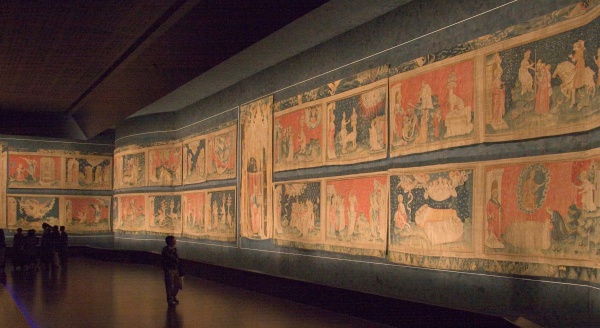Facts About The Apocalypse Tapestry
The Apocalypse Tapestry is a magnificent piece of medieval French art commissioned by Louis I, Duke of Anjou, between 1377 and 1382. This vibrant tapestry vividly depicts scenes from the Book of Revelation by Saint John the Divine, spread across 90 sections.
Over the years, the tapestry was neglected and mistreated, but it was eventually recovered and restored. Today, it can be admired at the Château d'Angers. Historian Jean Mesqui celebrates it as a masterpiece of French cultural heritage and an extraordinary artistic interpretation of Saint John's Revelation.
Louis I commissioned the tapestry, with Jean Bondol creating the sketches and Nicholas Bataille overseeing the weaving. It was likely displayed outdoors on wooden structures to enhance the viewing experience. The artwork was intended to elevate the status of Louis's Valois dynasty during the tumultuous Hundred Years' War. The theme of the Apocalypse resonated in the 14th century, highlighting the epic struggle between good and evil through heroic angels and fearsome beasts.
Initially, the tapestry was donated to Angers Cathedral, but it was looted and repurposed during the French Revolution. It was rediscovered in 1848, and the surviving fragments were returned to the cathedral in 1870. Eventually, the tapestry found a new home at the Château d'Angers for better display and preservation. Originally comprising six sections with 90 scenes, only 71 scenes have survived. While the colors have faded over time, the Franco-Flemish style remains evident, featuring rich, realistic images in shades of blue, red, ivory, orange, and green.
Jean Bondol's weaving style in the tapestry is notable for its energetic and colorful depictions of angels and monsters, presented in a clear and organized manner. The massive scale of the tapestry allows for dramatic, larger-than-life portrayals that leave a lasting impression. Interestingly, the tapestry's depiction of Death as a decaying corpse is a unique take, diverging from the typical 14th-century portrayal of Death as a living figure, which was a popular style in England at the time.
The Apocalypse Tapestry remains a remarkable example of medieval art, capturing the imagination with its vivid scenes and historical significance.

 Andorra
Andorra